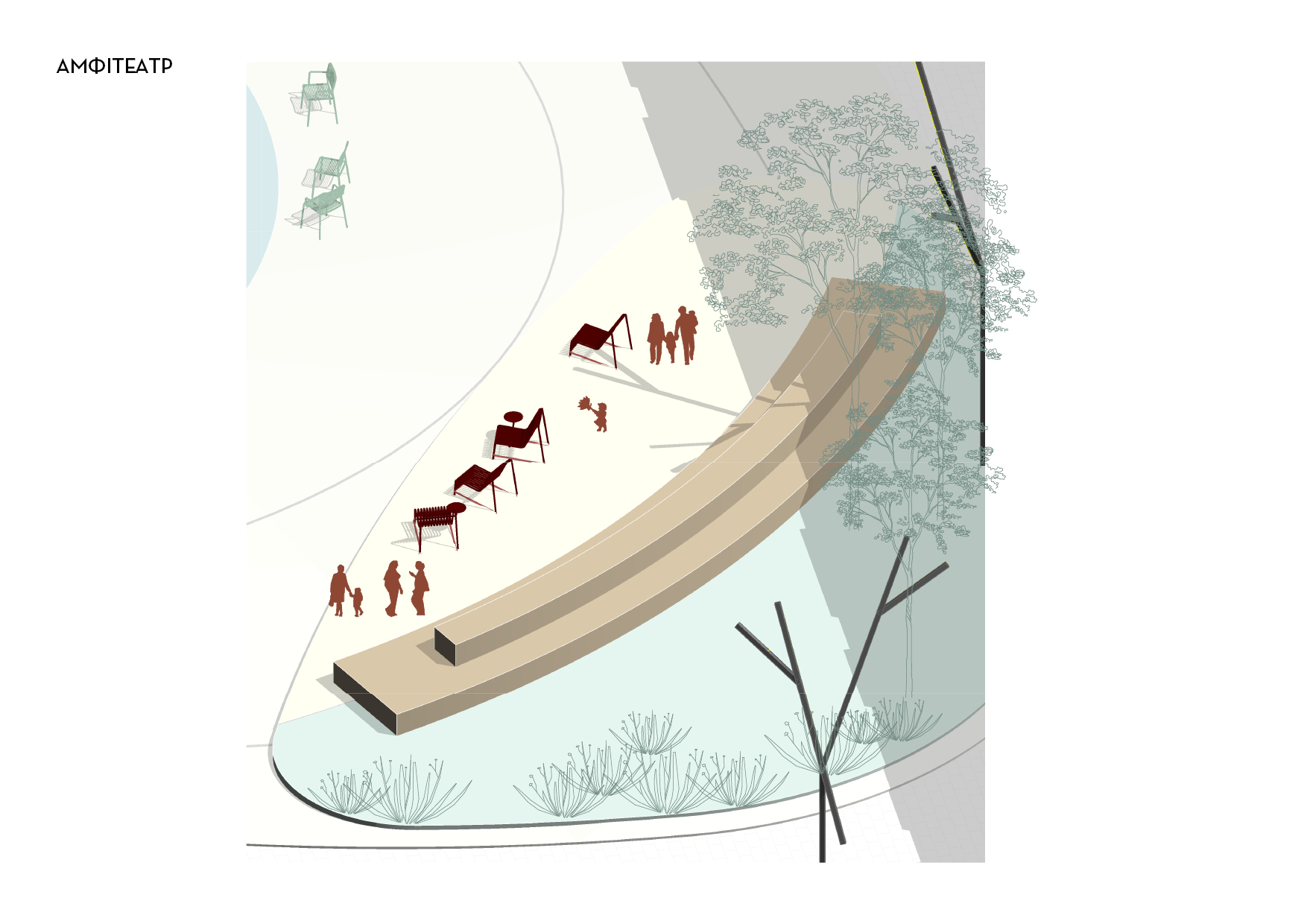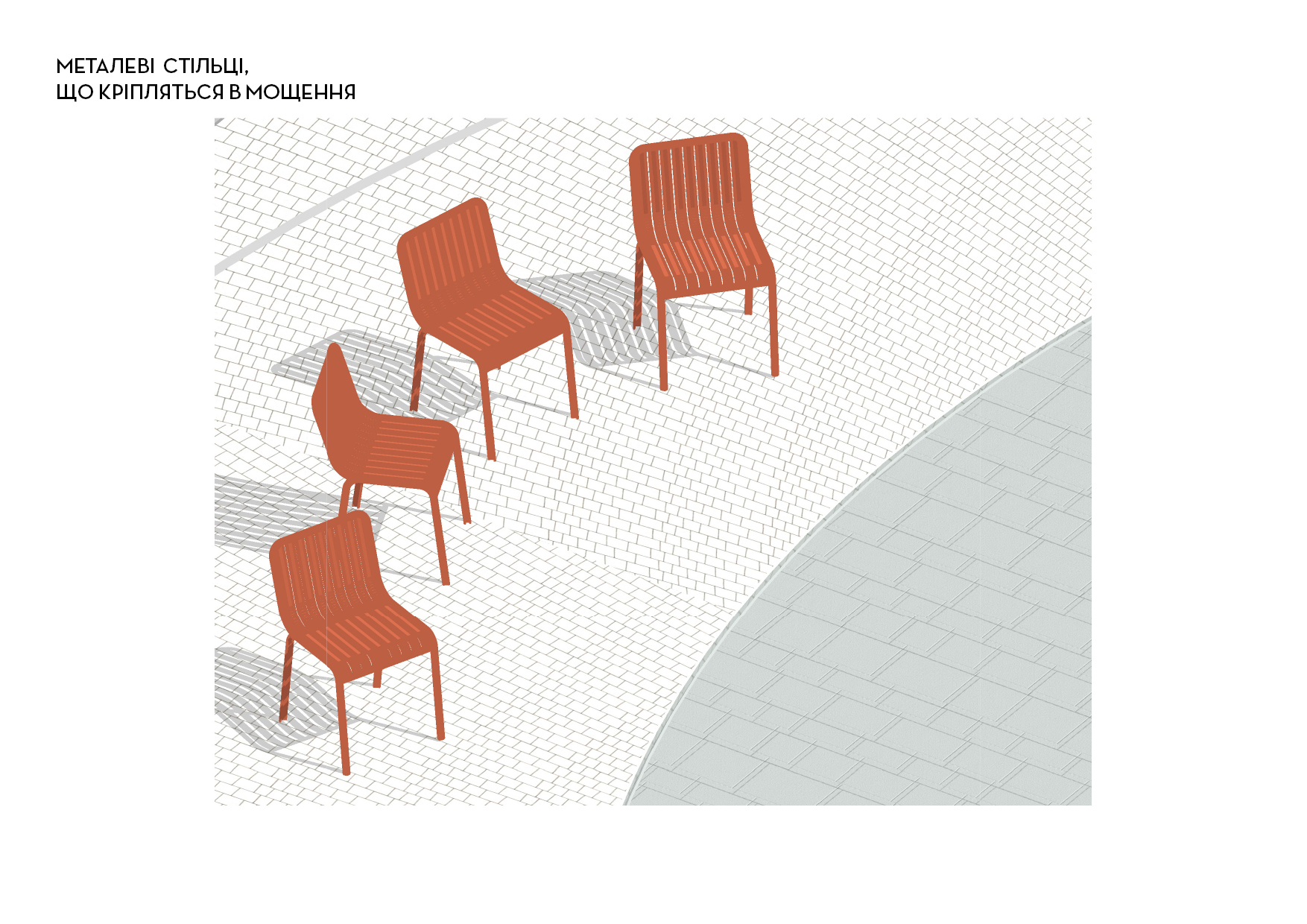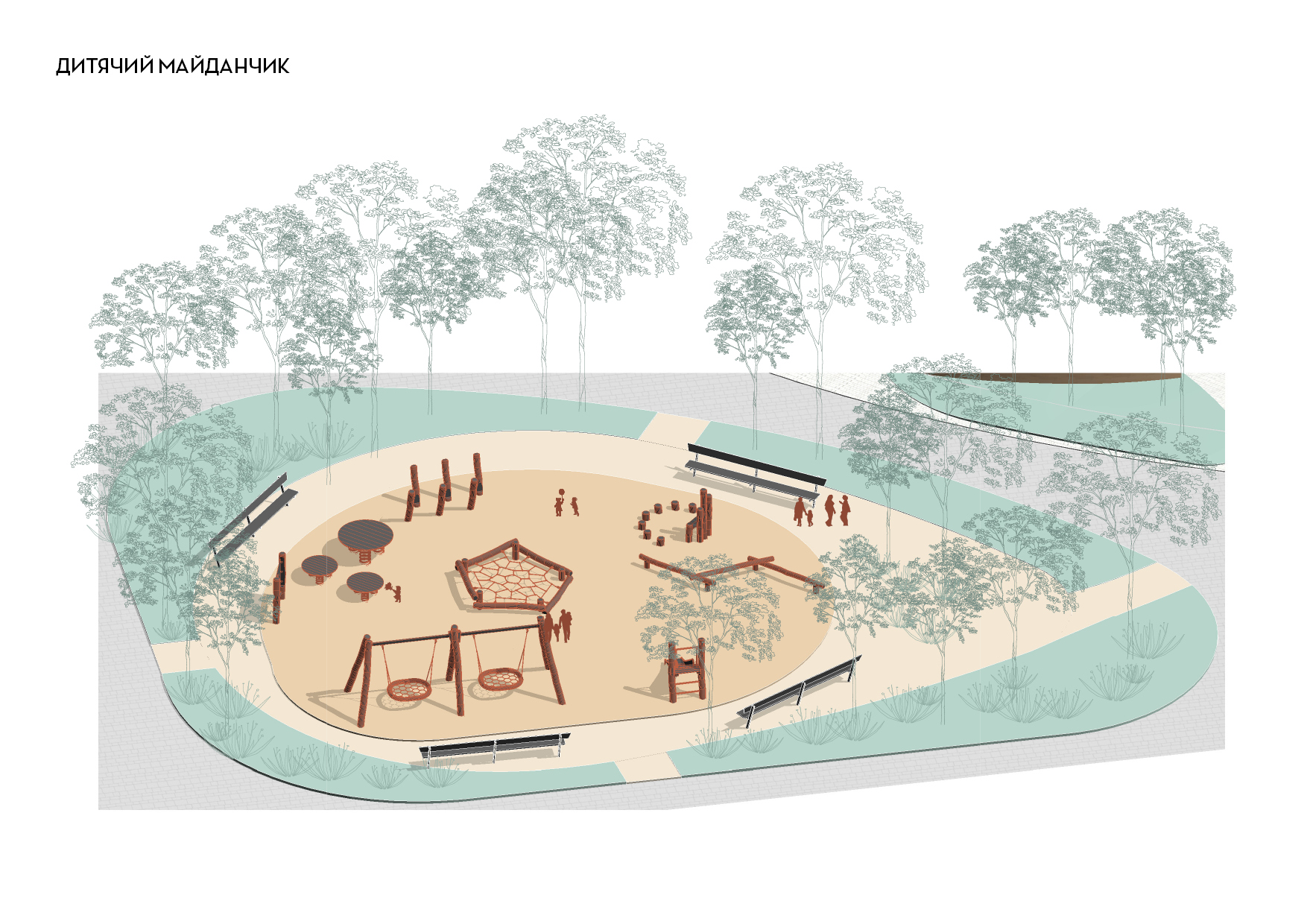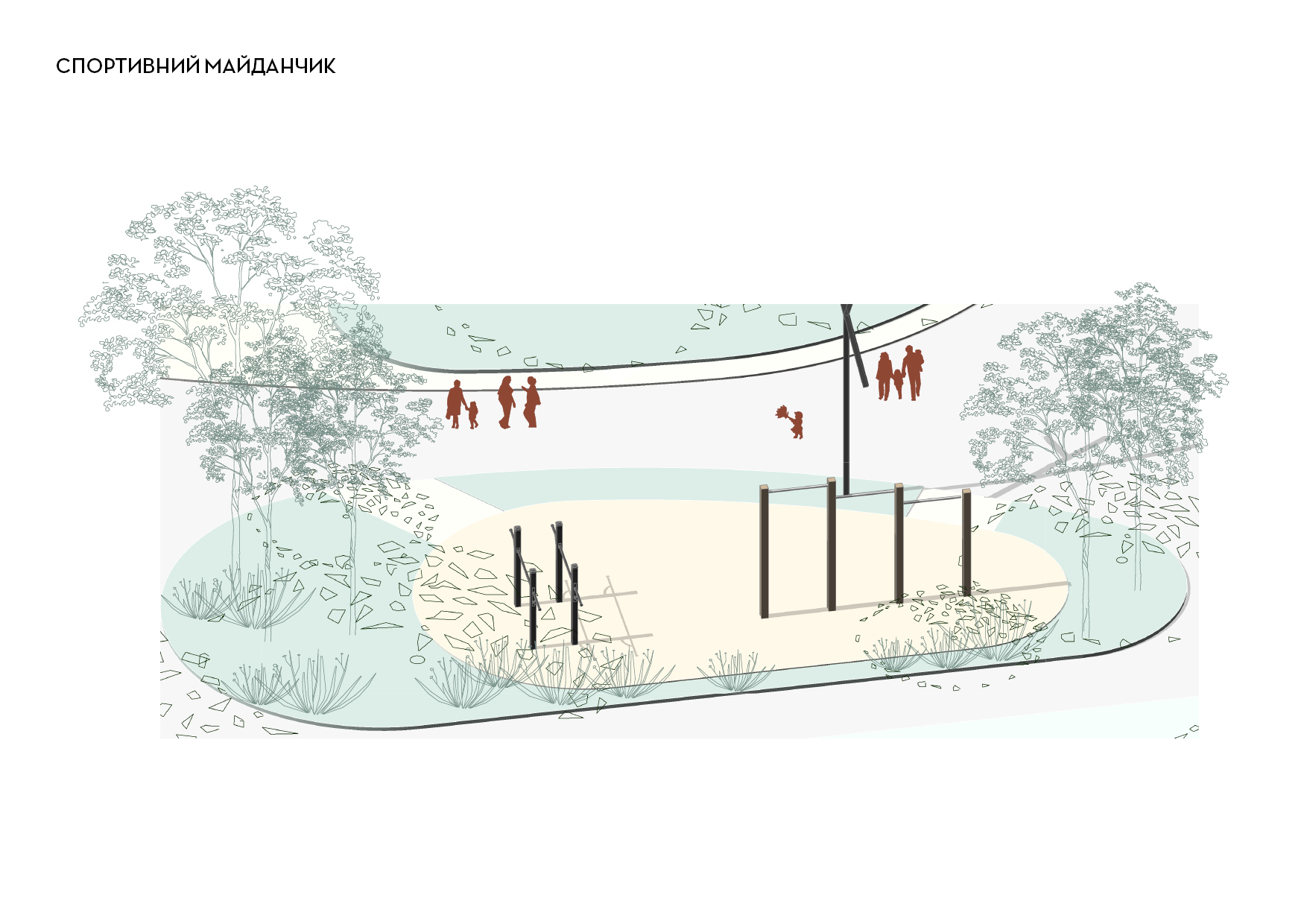Reconstruction of Industrial Buildings
for Sports and Administrative Functions
Year: 2025
Categories: Renovation, Office&Retail
Location: Zhytomyr, Ukraine
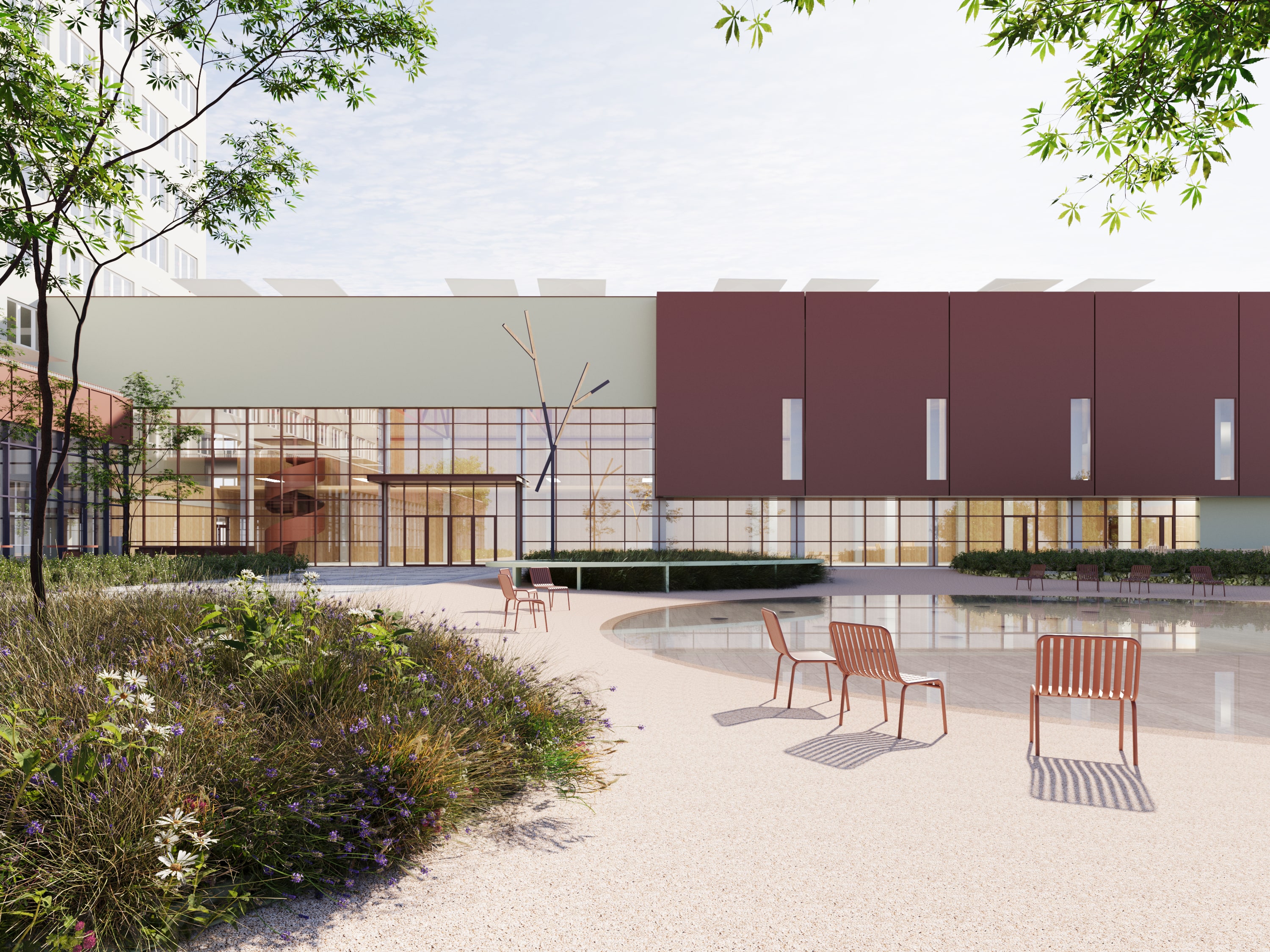
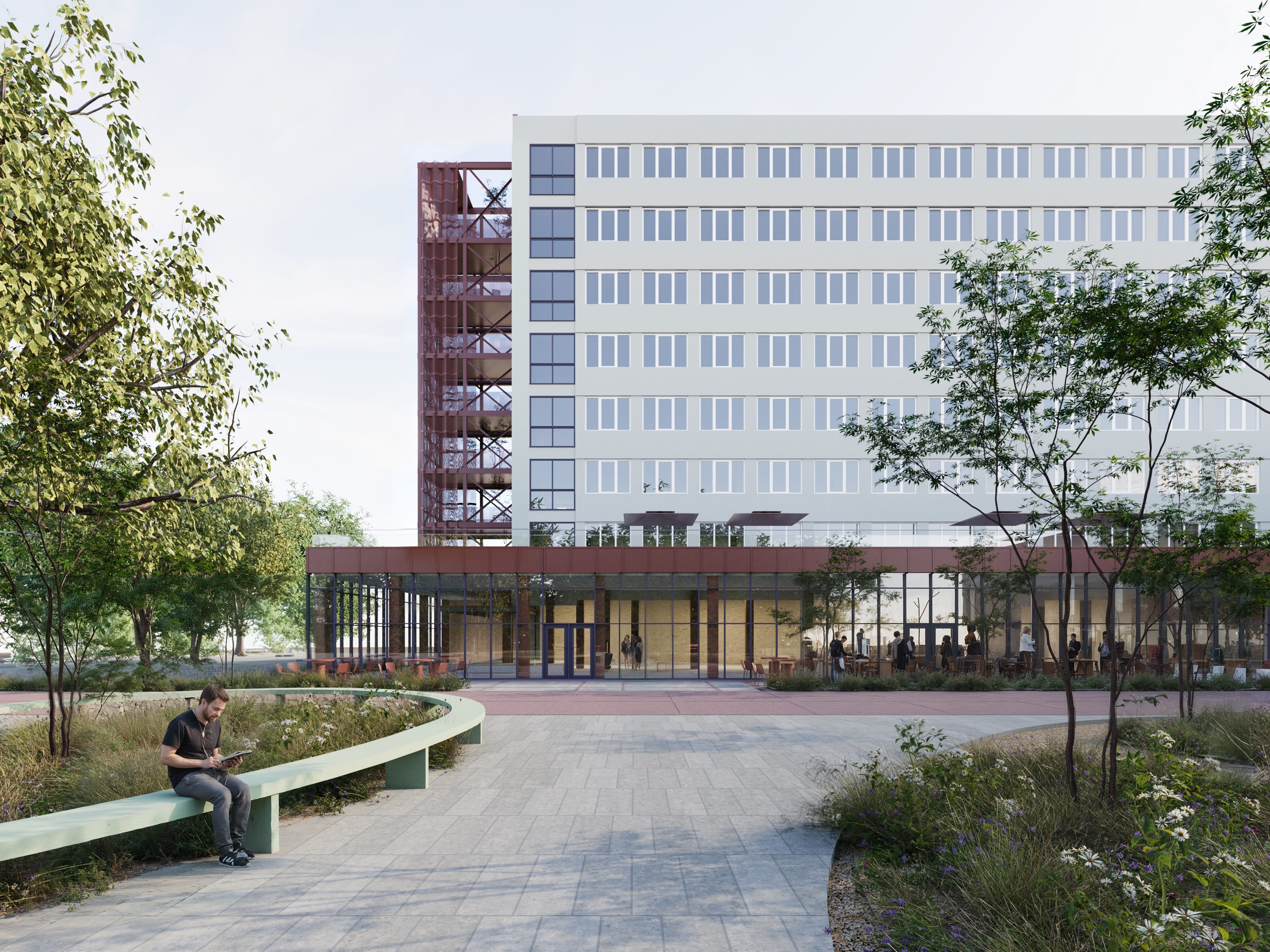
The site is part of the industrial zone of Zhytomyr.
The master plan concept includes the development of public spaces and infrastructure and outlines an integrated strategy for the area’s revitalization, aimed at bringing new life to a neglected part of the city.
The prospective development of the site is envisioned as part of a larger transformation of the industrial zone, connected by a pedestrian promenade that flows into insular recreation areas — the courtyards of former factory buildings.
The former factory building is constructed with a prefabricated reinforced concrete frame. Its structural and enclosing elements, as well as the composition and design of its volumes, hold great potential for creating the “post-industrial charm” of the renewed facility.
The large-span interior spaces allow for open-plan layouts and conversion into multipurpose areas such as workshops, open-space offices, and exhibition halls.
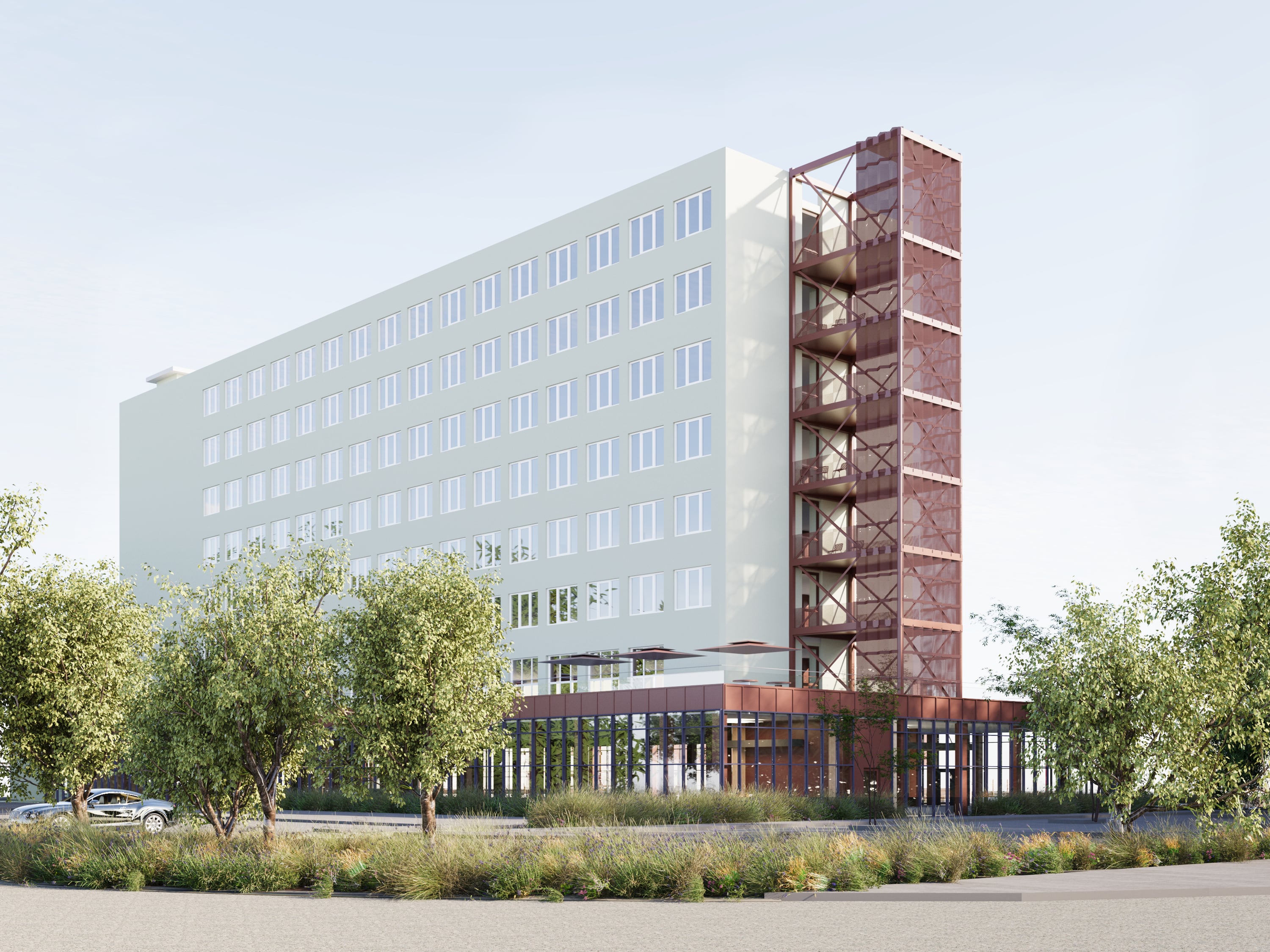
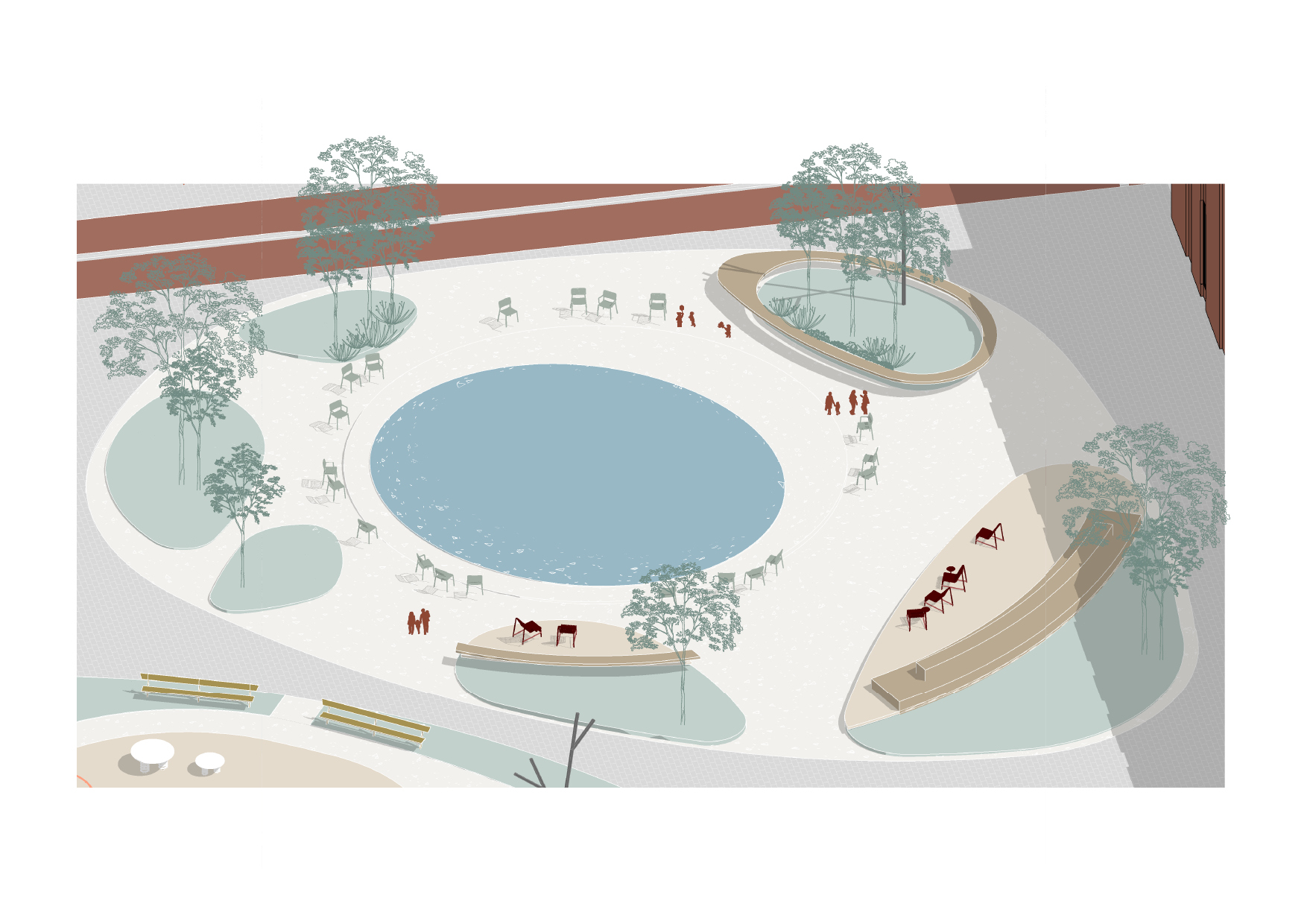
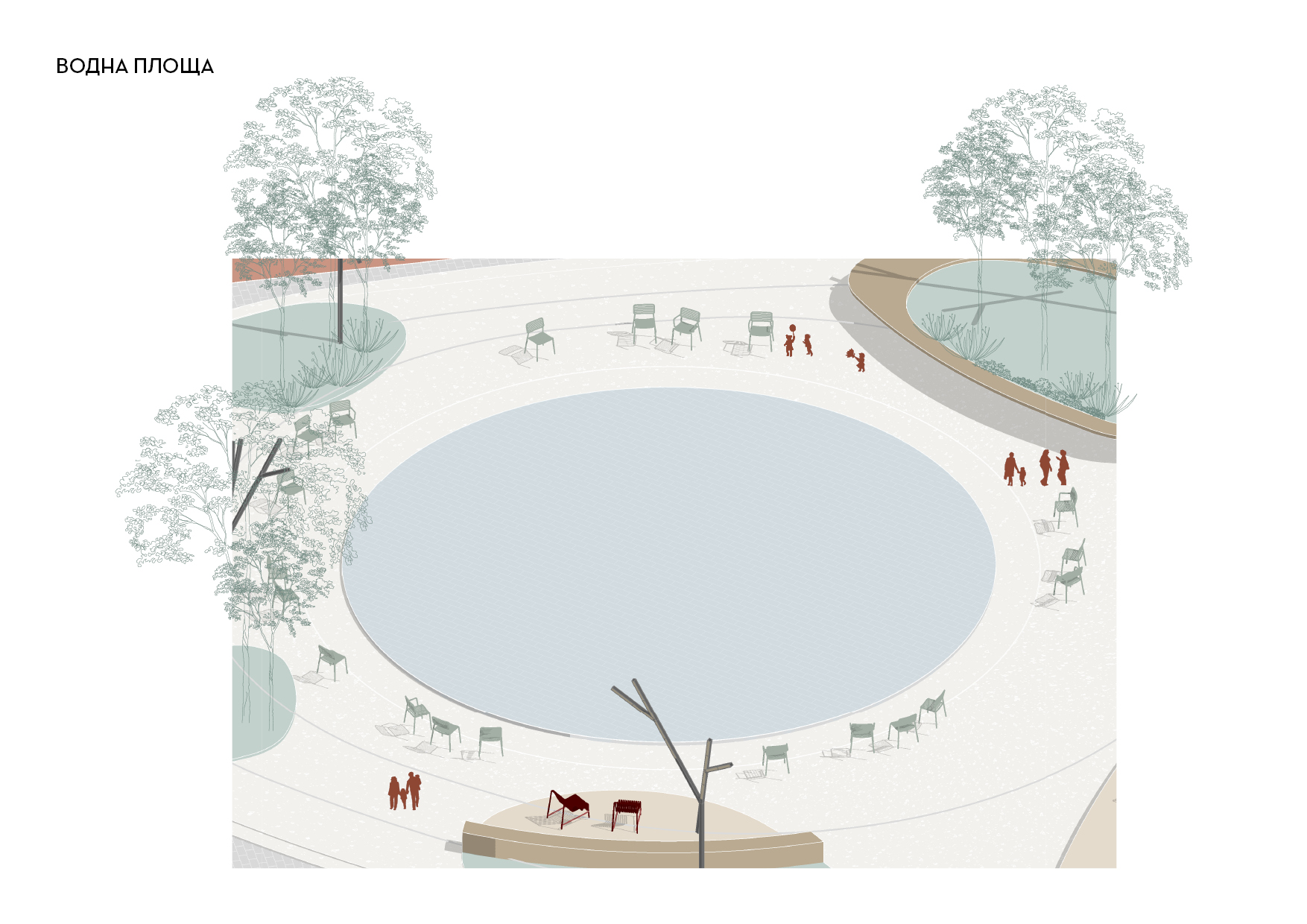
The façade design introduces an “architectural pause” — instead of demolishing or concealing the existing fabric, it is complemented by new functional elements, such as an attached structure.
The existing façades are proposed in a light, monochromatic palette characteristic of the building, while accents are created by the saturated color of the new metal structures, the base panels, and the window mullions.
The red structural trusses are retained as a strong, distinctive element of the building; their protective coating color is reused as an accent tone throughout the design.
The renovated building is conceived as a cultural and residential hub for artists, researchers, and designers, featuring coworking areas, workshops, exhibition and workshop spaces, and small concert venues.
The inner courtyard is transformed into a green park and recreation area — the central public space of the future complex — dedicated to leisure (benches, a stage, open-air cinema), art installations, and outdoor workshops.
In analyzing and reimagining the existing eight-story industrial building for adaptive reuse as a space for living, working, and recreation, the absence of outdoor areas in the newly created units was identified.
As it is technically impossible to add individual balconies to each unit, a new attached structure is proposed — serving both as an infrastructural component and as an active social space.
The proposal accommodates the installation of technical elements (such as air conditioning units, lighting, and signage) while also providing outdoor furniture, clothes-drying racks, and balcony greenery. These features create diverse programs on each floor — from gardening to communal leisure — enhancing both the building’s functionality and the street’s aesthetic appeal.
s






